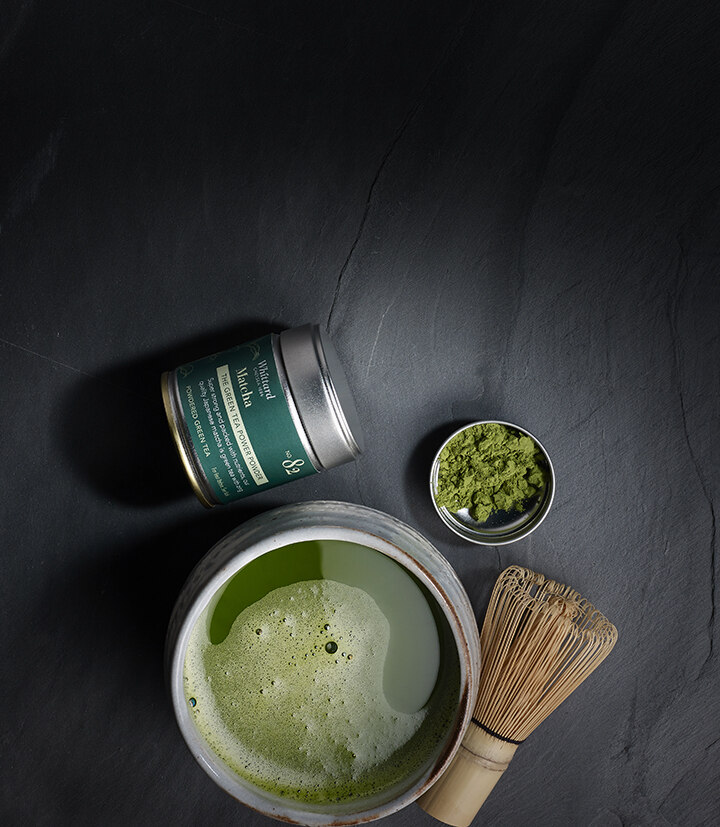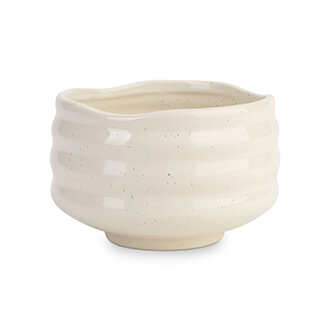Matcha’s on the Menu
Let’s cut to the chase, what’s so marvellous about matcha? Think of it as a green tea espresso: by consuming the leaf as a powder rather than infusing and removing, you get all the goodness contained in the leaf, from fibre to vitamins. And then there’s its distinctive delicious flavour – bright and vegetal with a lingering sweetness, we’d describe it as a breath of fresh air in a cup. It’s no wonder that this green tea power powder became a way of life in Japan, forming the basis for many a tea ceremony.

Did you know?
It's perhaps the most labour-intensive tea produced in the world, taking 1 hour to grind 40g tea(!) – any faster and the leaf heats, becoming yellow and flavourless.
How Is Matcha Tea Made?
Matcha is made from the leaves of tencha, a high-quality green tea. The tea bushes are grown under the shade of a “tana” (a structure with black matting) for c. six weeks before the leaves are picked. With minimal sunlight, the plant increases its production of chlorophyll and other nutrients in order to grow, making for a sweeter flavour and darker colour. The leaves are then steamed as quickly as possible to halt oxidation, dried and destemmed and deveined using electrostatic machinery. Finally, they’re ground in a hand-carved stone mill.
How to Prepare Matcha Tea

Mix paste

Top up with water

Whisk

Enjoy!
- Use freshly drawn and boiled water and allow it to cool to 75–80°C (let your kettle sit with its lid open for 10–15 minutes); boiling water will ruin its delicate flavour.
- Two things are crucial to make matcha as the Japanese do: high-quality matcha and a traditional bamboo whisk or “chasen” to mix the matcha to a fine froth. And to serve it? A traditional stoneware bowl, or “chawan”, handcrafted by Japanese ceramicists, of course.
- For a real morning pick-me-up, try matcha as an alternative to coffee. It contains more caffeine than coffee (approx. 126mg vs 100mg per 100ml*), which is released at a slower rate, making for a longer-lasting more stable energy boost.
*It’s a good idea to bear in mind that this figure can vary depending on the specific batch of tea you drink, and the time, temperature and strength of your brew.
Mix Up Your Matcha
Who said matcha could only be enjoyed one way? We couldn’t resist getting a little creative, whisking it into a latte for a moment of indulgence…
Recipe: Matcha Latte
Make it iced: switch the hot milk for cold and load the bowl with ice.

1–2 tsp Matcha (depending on personal taste)
50ml 75–80°C water (after boiling the water, let your kettle sit with its lid open for 10–15 minutes)
1 cup milk (we recommend soya milk for a deliciously creamy latte)






